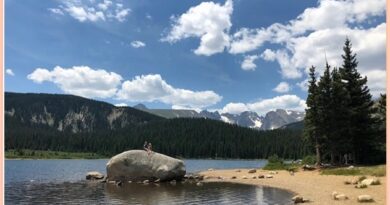Secrets of Fingal’s Cave Scotland that is Symmetrical in shape
Fingal’s cave, Scotland
As a rule, caves are round in shape with round rocks but have you seen caves with symmetrical square caves? These caves are situated on the uninhabited islands of Staffa in Scotland. Except for researchers and scientists, people don’t usually visit these caves. The cave has a large entrance and is filled with seawater. One can look at the Photograph and admire the bounties of nature. The cave was formed by lava flows millions of years ago and was named after the hero of an epic poem by the Scottish poet James Macpherson. It is approximately 22 meters tall and 82 meters deep, with a large entrance that allows sunlight to filter through the water and reflect off the cave’s walls, creating a mesmerizing effect. Fingal’s Cave is known for its hexagonal basalt columns, which are similar to those found at the Giant’s Causeway in Northern Ireland. These columns were formed by the cooling and contraction of lava as it flowed into the sea.
Staffa, Fingal’s cave is accessible by boat from the nearby island of Iona or from the town of Oban on the mainland. Visitors can explore the cave by walking along a path that leads to a viewing platform, where they can admire the stunning geological formations and listen to the sound of the waves crashing against the cave’s walls.
Fingal’s cave geology
Fingal’s Cave is a unique geological formation that was created by volcanic activity. It is formed entirely from hexagonally jointed basalt rock columns. The rock in the cave is of the Paleocene age and is similar in structure to both the Giant’s Causeway in Northern Ireland and Ulva. Due to the seawater contact the lava started cooling on the upper and lower surfaces, resulting in contraction and fracturing and a regular hexagonal fracture pattern with fractures perpendicular to the cooling surfaces.

The lava flows that created Fingal’s Cave occurred about 60 million years ago and these columns are a distinctive feature of the cave and can be seen in the walls and roof. The columns in Fingal’s Cave are made of basalt, which is a dark, dense, and fine-grained volcanic rock. Basalt is formed from the rapid cooling of lava, which results in a crystalline structure that is composed primarily of plagioclase and pyroxene minerals. The basalt columns in Fingal’s Cave are typically 1 to 2 meters in diameter and 10 to 12 meters in length. The cave itself was formed by the erosion of the basalt columns by the sea over millions of years. The constant pounding of the waves against the columns gradually wore away the softer parts of the rock, leaving behind the distinctive hexagonal columns that form the walls of the cave.
Fingal’s cave tour
Fingal’s Cave can be visited as part of a guided tour, which typically includes transportation by boat from the nearby island of Iona or from the town of Oban on the mainland. During the tour, visitors will have the opportunity to explore the cave by walking along a path that leads to a viewing platform inside the cave. From there, they can admire the stunning geological formations and listen to the sound of the waves crashing against the cave’s walls. The unique acoustics of the cave make it a popular spot for musicians and singers to perform.
Also, read- The Giant Causeway-Basaltic flow of Tertiary, Take a traverse around the place
The tours are typically led by experienced guides who can provide information about the geology and history of the cave, as well as its cultural significance. Visitors should wear appropriate footwear and clothing, as the path leading to the cave can be slippery and the weather on the island can be unpredictable. It’s also important to note that access to Fingal’s Cave may be restricted at certain times of the year due to nesting seabirds, so it’s a good idea to check with the tour operator before planning your trip.
Fingal’s cave isle
Fingal’s Cave is located on the island of Staffa, which is part of the Inner Hebrides archipelago. The island is approximately 0.8 km long and 0.4 km wide and is made up of hexagonal basalt columns similar to those found in Fingal’s Cave. In addition to Fingal’s Cave, Staffa is also home to other geological wonders, including the Giant’s Causeway, a large amphitheater-shaped rock formation known as the “Basaltic Temple,” and a variety of sea caves and arches. Despite being uninhabited, Staffa is a popular destination for tourists. Visitors to the island can explore the unique geological formations, hike the scenic trails, and enjoy the stunning views of the surrounding sea and coastline.

How to Reach the Cave
Fingal’s Cave is located on the island of Staffa in the Inner Hebrides of Scotland. The most common way to reach Fingal’s Cave is by taking a boat tour from the nearby island of Iona or from the town of Oban on the mainland. There are several tour operators that offer boat trips to Staffa, and many of them include a stop at Fingal’s Cave as part of the tour.
Another option is to kayak to Staffa from the nearby island of Mull. This can be a challenging and potentially dangerous journey, so it’s important to have experience kayaking in open water and to be aware of the tides and weather conditions.
Visitors with their own boats or yachts can also sail to Staffa and anchor near the island. However, it’s important to be aware of the shallow waters and rocky coastline surrounding the island.



